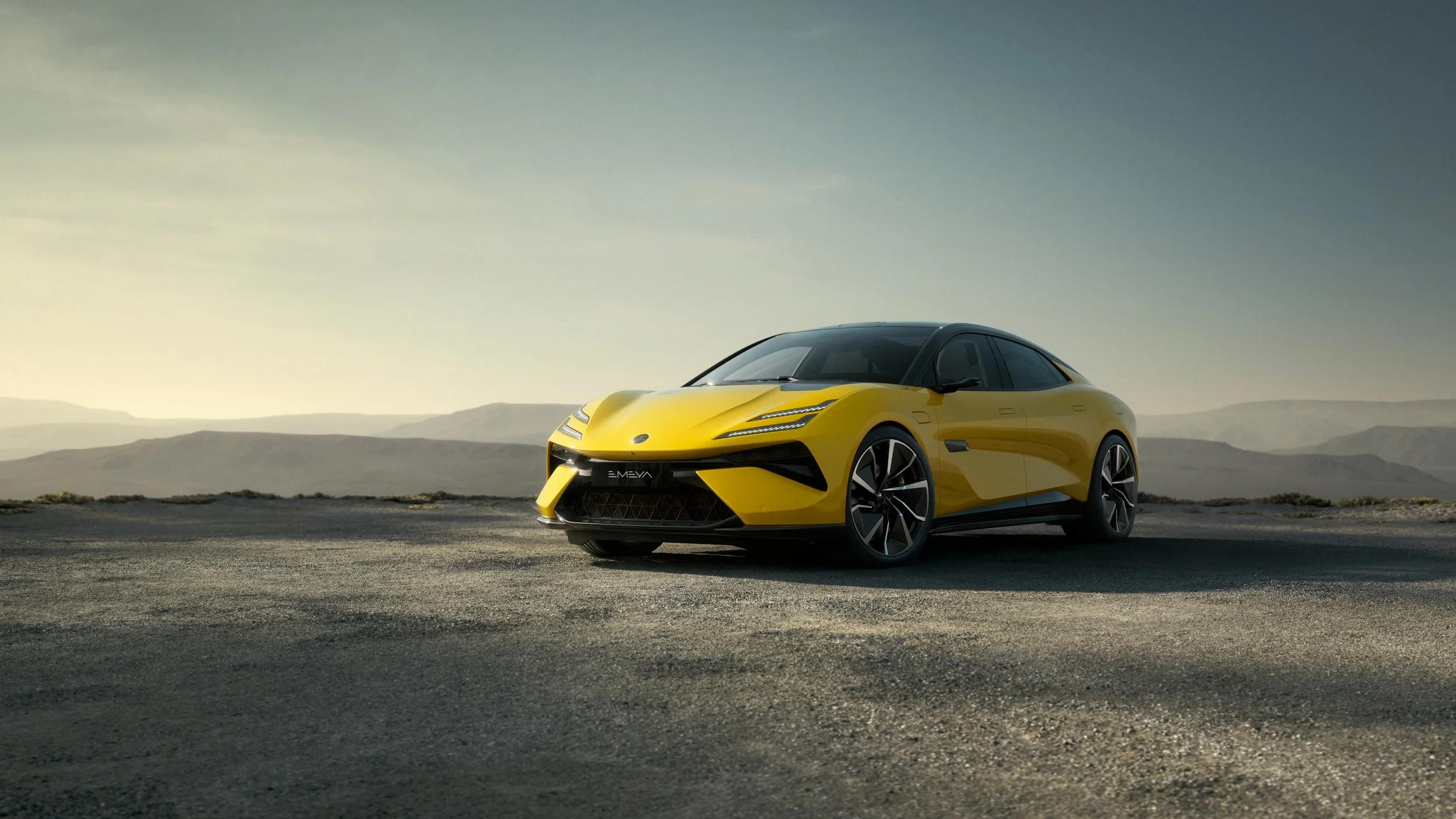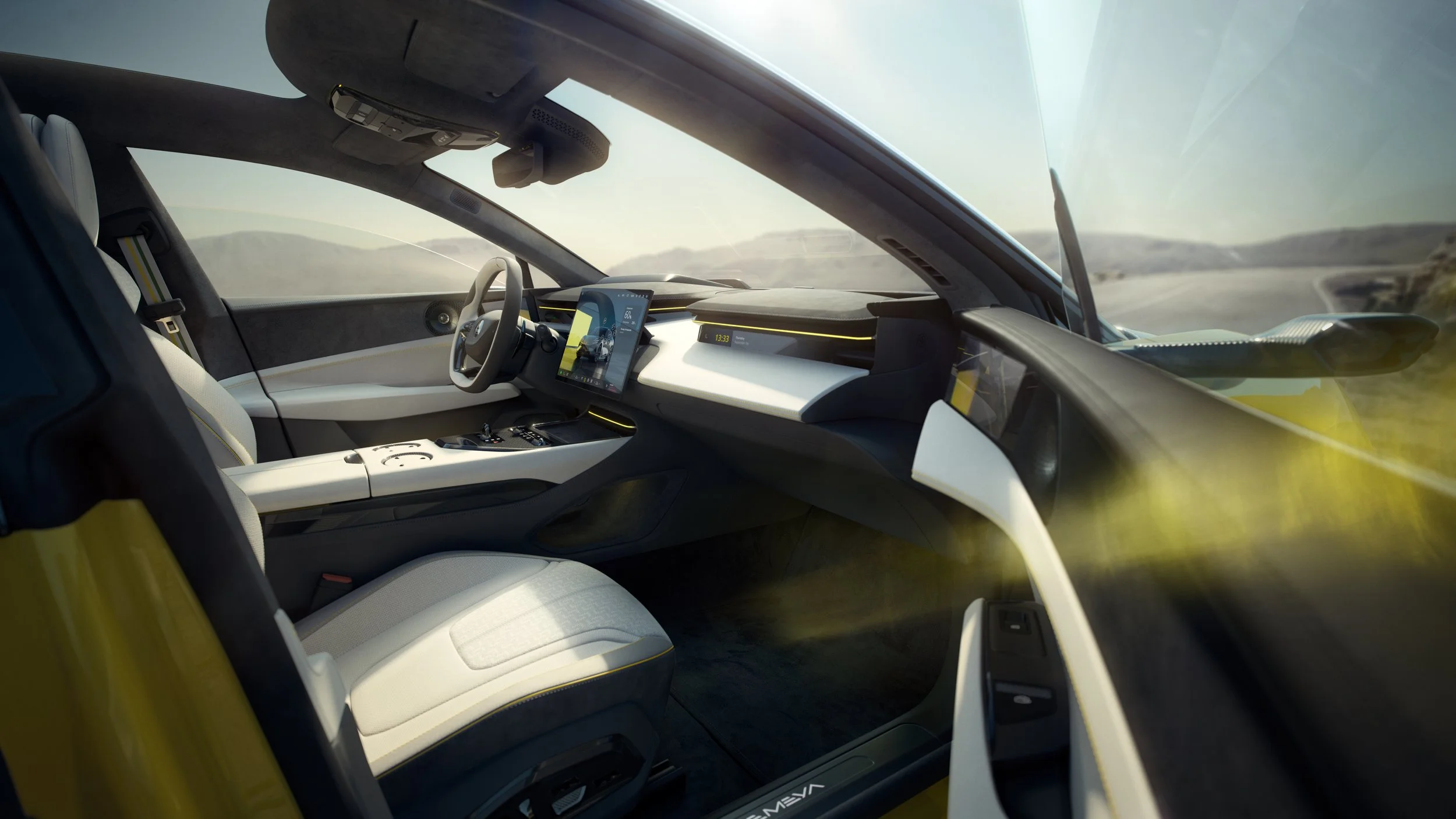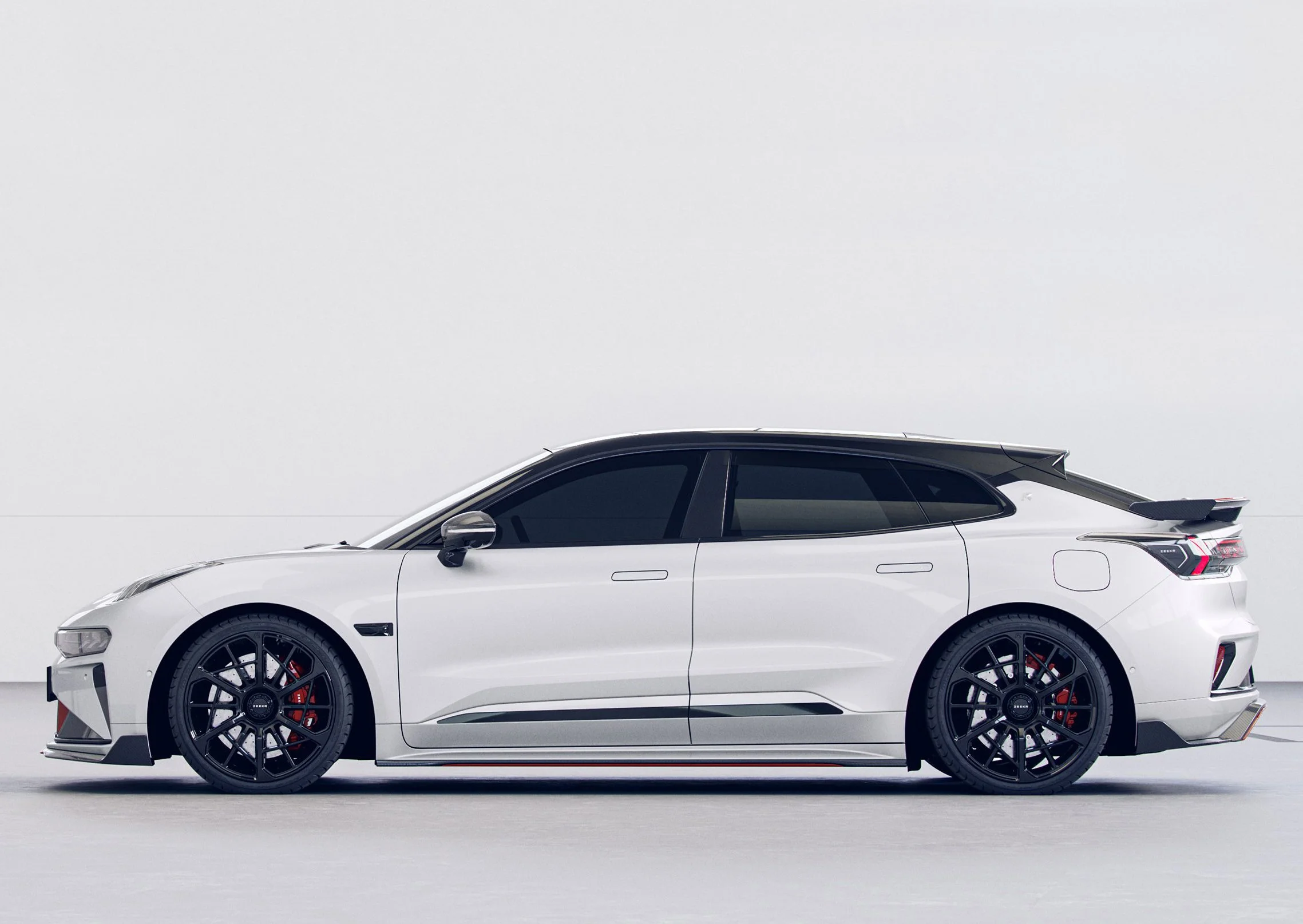With the Emeya, Lotus Could Take the Bull by the Horns
By Phil Royle — Sept. 8, 2023
It wasn’t long ago that Lamborghini unveiled the Lanzador, its debut EV concept, and the world took notice – but it took notice for many of the wrong reasons. The fact was, the renowned Italian exotic automobile maker brought few technical details to the table, and then told everyone to hold tight until 2028. At best, this move was anticlimactic; at worst, it was a completely avoidable failure. Yet it’s this unforced error that has opened the door for a scrappy little supercar manufacturer that’s long ridden a rung down from the Italians: Lotus. And Lotus is coming in hard.
With its future always in a seeming state of flux, Lotus is hardly the posterchild of robust automotive business plans. Over the last 40 years, a majority share in Lotus has been held wholly or jointly by General Motors, Toyota, German A.C.B.N. Holdings S.A., Malaysian company Proton, and now Chinese company Geely. That last acquisition came in 2021, with the British sports car maker posting a roughly $185 million loss the following year. That year also saw Lotus sales dip from 1,566 units in 2021 to roughly 567 in 2022.
The four-door Lotus Emeya offers a bold, sleek look with a rear wing that extends at speed.
Regardless of who’s doing the books, there’s no way to put a positive spin on that – other than it could be raining cash at Lotus very soon, and all it took was a shift to electric.
Lotus announced its electric Eletre in March 2022, and recently revealed that in the first half of 2023, it received 17,000 orders for the sizable SUV. Prior to Geely’s involvement in the company, we’d likely tip our cap to Lotus and offer a bit of British sarcasm with, “Good luck scaling, chaps.” But with 1.4 million cars produced in 2022, adding 17,000 to Geely’s production run in Wuhan, China – where the Eletre is produced – is child’s play.
“We set an ambitious goal in 2018, with the launch of our Vision80 strategy to transform the business from a traditional automotive brand to become an all-electric, luxury, mobility provider in 10 years,” Feng Qingfeng, CEO of Lotus Group, said when the company announced those preorder numbers. “We have spent the last few years laying the foundations for success and today’s announcement demonstrates that Lotus is no longer the same business that it has been in previous years. We are firmly on track to becoming a global performance brand by 2028.”
Riding those coattails, Lotus has now unveiled the Emeya, a four-door “Hyper-GT” sports car that will also be produced in China. And unlike Lamborghini’s seemingly overlanding-capable shell of a four-door EV, Lotus has revealed something attractive: specs.
The Emeya – which Lotus notes will be the company’s flagship model – will feature a dual permanent-magnet motor setup with single-speed front and dual-speed rear transmissions. A big power 905 hp and 727 lb-ft version will push the grand tourer to 62 mph in 2.78 seconds, topping out at 159 mph. There are reports that a lower power version will output 603 hp.
The Emeya’s interior is subtle and clean, with just enough digital displays present.
The battery will be a sizable 800v, 102 kWh unit capable of charging from 10-80% in 18 minutes, with 93 miles of range being added in “approximately” five minutes on a 350 kW DCFC.
Overall range was not given, but assuming decent efficiency, expect around 280-300 EPA-rated miles on the low-power version, and less on the full-bore beast.
Pricing was also not announced, but considering the Emeya will share components with the Eletre, expect the Emeya to start around $100,000 for the low-power model. This should prove to be about $100,000 less expensive than the Lamborghini Lanzador – and the Lotus will be available a lot sooner.
Being first to market has its benefits, for sure, but being a little late isn’t the end of the world. But the fact that the low-slung Emeya grand tourer is expected to begin production in 2024 – four full years before Lamborghini expects to turn a wrench on its 4x4 EV sedan – this could spell disaster for one raging bull and open the door wide for the scrappy little brand that’s always done more with less.
(Images courtesy Lotus)










